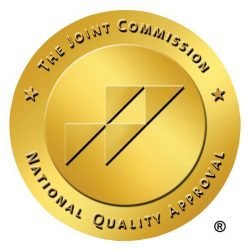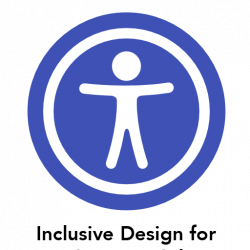
How to Facilitate a Judgment-Free Conversation about Diabulimia (ED-DMT1)
Successful Diabulimia treatment is only possible when clinicians and therapists are able to align and communicate well.
1. Do your homework
Just as many clinicians may have to do some catching up to educate themselves about eating disorders, you, too, may have to spend some serious time learning more about diabetes before initiating a conversation with a member of your client’s healthcare team. Informed advocates are the best advocates. Here are some great resources of which to be aware:
2. BE PREPARED TO TALK ABOUT LANGUAGE (IN A NON-JUDGMENTAL WAY)
There is almost always a learning curve when figuring out the nuances of communicating about eating disorders. As you might expect, there are even more complexities in navigating conversations about diabulimia and diabulimia patients As your client’s advocate, you do a great service by helping their clinician understand this subtle shift in language.
There are also some unique particulars to learn about communicating with diabulimia clients. Keep these things in mind:
- In general, we want to develop inclusive language that reduces shame and judgment.
- We do not “control” diabetes. We manage diabetes.
- Find out how the client likes to be identified; we are not treating “diabulimics.” We are treating humans who have diabulimia, a misunderstood, life-threatening illness that they did not choose.
- Talking about numbers is unavoidable for diabulimia patients, but it is helpful to talk about reasonable ranges rather than rigid targets.
- Talk about HOW to live with chronic illness; clients will not recover from diabetes or become the “perfect diabetic” but they can recover fully from their eating disorder.
- Remember: diabetes doesn’t follow the rules, even if the patient does. Reacting to the numbers is not helpful. Blood sugar doesn’t tell the whole story. There are many factors to consider.
- Remember: your client has probably already experienced biases related to their diabetes and possibly their eating disorder as well. This could cause them to feel defensive and/or ashamed.
- Remember: the client will not remember everything you say, but they will remember how you made them feel (wise words inspired by the great Maya Angelou).
Try to be patient with clinicians as they work to incorporate these language modifications. At the same time, remind them that the language they use with their patient is a significant part of that individual’s recovery environment and that eating disorder clients can’t heal in an environment of judgment and shame.
3. TONE MATTERS
The tone of this conversation ought to be quite urgent. The mortality rate for people with diabulimia is much higher than that of any other eating disorder and higher still than the mortality rate of diabetes alone. Your client will not be well unless the mental health component of their eating disorder is treated in concert with the physical component of diabetes, and it is important that the clinician understands this.
4. ASK QUESTIONS
When you have these conversations, it’s as much an opportunity for learning as it is for teaching and advocating for your client. Come prepared to ask some questions of your own. For example:
- Ask about the client’s history, like how often they’ve ended up hospitalized for Diabetic ketoacidosis (DKA).
- How “brittle” is the client?
- Ask the clinician how much they have struggled with this patient; have they been difficult to work with?
- Are they aware of any manipulative or dishonest behavior?
- What is the patient’s frustration level?
- Ask them if there are topics they’d like you to bring up in your sessions.
- Ask the clinician what will happen if your client continues on their current trajectory; when should you expect to see serious physical consequences if things don’t improve soon?
Last but not least, ask how you can support them.
The whole point of these conversations is to strengthen your client’s recovery team. For the team to be successful, each team member needs to be supportive and collaborative. And remember, your client will absolutely notice if your messaging differs significantly from what their clinician is saying which could erode trust. You must try to be on the same page and approach your client’s treatment as a united front.
5. IT TAKES A VILLAGE. FOLLOW UP.
Don’t leave this meeting without discussing the next steps and scheduling a follow-up conversation. This ongoing arrangement will help you and the client’s medical team remain alert, supportive, and able to act quickly if the client’s condition worsens and suddenly requires a higher level of care.
Clinicians, of course, will all react differently to a therapist’s insistence on being involved and collaborative. But as your client’s advocate, it is your responsibility to do all you possibly can to help build your client’s recovery team.
6. COMPASSION IS KEY
Our Diabulimia Treatment Program empowers Alsana’s care teams to open our doors to a new, underserved population. This life-saving work resonates with us on a personal level; one of the original architects and inspirations for our ED-DMT1 program was diagnosed with type 2 diabetes in 2017. Having experienced first-hand the stigma, shame, and bias that often accompany such a diagnosis, it was top of mind to design a program that could deliver holistic, evidence-based care without judgment or further stigmatization.
Our nurses carry empathy and compassion by trade. Alsana’s Diabulimia Program is something we truly believe in. As a test, we often ask ourselves, “Would I admit my child-or myself- to this program?”
And the answer is, “yes.”
We would like to be your eating recovery community.
At Alsana, our primary objective is to provide quality healing for lasting eating disorder recovery to as many humans as possible. We also strive to support the providers who are in the trenches with clients struggling with eating disorders. If you need help, get in touch today.
Additional resources:

We Are Here to Help
If you or someone you love is currently struggling with Type 1 diabetes, treatment options are available to work with the delicate nature of this condition. It’s important to be informed about the complexity of the disease, and ask for help if struggling with any issue surrounding how to care for and love your body.

WHAT YOU NEED TO KNOW ABOUT ED-DMT1, “DIABULIMIA”
At Alsana, we believe that all individuals with an eating disorder deserve holistic care adapted to their unique needs. For individuals with co-occurring eating disorders and diabetes mellitus type I, a safe, inviting environment with professionals who specialize in both diagnoses is vital…
Our Recommended Articles
Start the road to recovery with Alsana.







